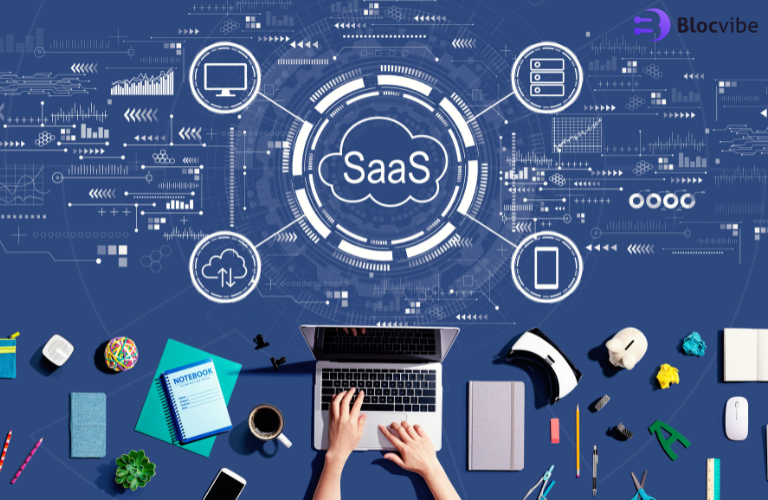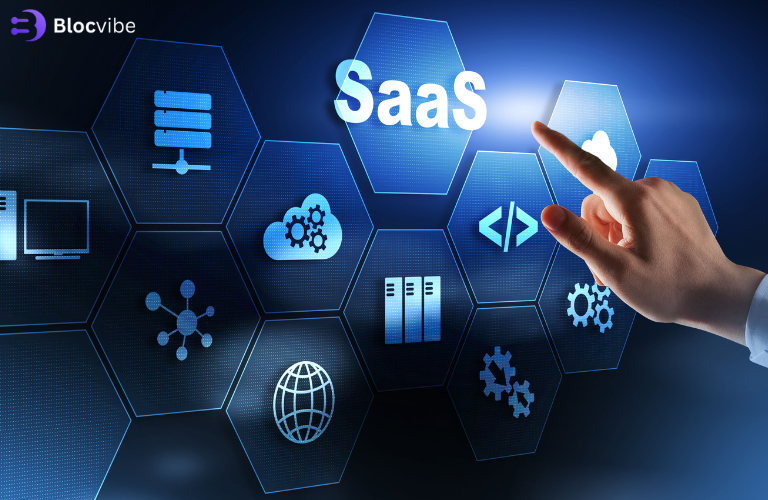Introduction to SAAS Business Solutions
In today’s digital era, Software as a Service (SAAS) has emerged as a game-changer for businesses, offering flexible and scalable solutions accessible via the internet. SAAS business solutions are revolutionizing the way companies operate, providing streamlined processes and enhanced efficiency across various industries. This article delves into the world of SAAS Business Solutions, focusing on its application in both mobile and web platforms.
Evolution of SAAS Business Solutions
SAAS has undergone a remarkable evolution since its inception. Initially, SAAS offerings were limited, with basic functionalities and rigid pricing structures. However, advancements in technology and changing market demands have propelled the evolution of SaaS a business software models, leading to more sophisticated solutions tailored to meet the diverse needs of businesses. Today, SAAS encompasses a wide range of services, from customer relationship management (CRM) to enterprise resource planning (ERP), catering to organizations of all sizes.
Advantages of SAAS Business Solutions
The adoption of SAAS business solutions offers several advantages for organizations. One of the key benefits is scalability, allowing businesses to easily adjust their usage based on demand. Additionally, SAAS solutions are cost-effective, eliminating the need for upfront investments in hardware and software infrastructure. Moreover, the accessibility and convenience offered by SAAS enable users to access critical business tools from anywhere with an internet connection, enhancing flexibility and productivity.
Key Features of SAAS Business Solutions
SAAS solutions come equipped with a plethora of features designed to streamline business operations and enhance user experience. These include robust user authentication and authorization mechanisms to ensure data security, as well as advanced customization options to tailor the software to specific business requirements. Furthermore, integration capabilities with third-party tools and services enable seamless collaboration and data sharing across different platforms.
Implementing SAAS Solutions on Mobile Platforms
The proliferation of mobile devices has necessitated the development of SAAS solutions optimized for mobile platforms. Mobile app development for SAAS involves considerations such as user interface design, cross-platform compatibility, and performance optimization. By providing users with access to essential business tools on their mobile devices, SAAS solutions enhance mobility and enable productivity on the go.
Deploying SAAS Solutions on Web Platforms
In addition to mobile apps, SAAS solutions are also deployed on web platforms to cater to users accessing the software through desktop browsers. Web app development frameworks enable the creation of responsive and user-friendly interfaces that adapt to various screen sizes and devices. Browser compatibility and performance optimization are crucial factors in ensuring a seamless user experience across different web browsers.

SAAS Business Models and Pricing Strategies
SAAS business models vary widely, with pricing structures ranging from subscription-based models to freemium and usage-based pricing. Subscription-based models offer users access to the software for a recurring fee, while freemium models provide basic functionalities for free, with premium features available for a fee. Usage-based pricing models charge users based on their usage of the software, allowing for greater flexibility and cost control.
Customer Relationship Management in SAAS Solutions
CRM is one of the most widely adopted SAAS solutions, enabling businesses to manage customer data, track interactions, and streamline sales processes. SAAS CRM solutions offer features such as lead management, contact management, and sales forecasting, empowering organizations to build stronger customer relationships and drive revenue growth. Additionally, CRM solutions often include features such as email marketing automation, customer support ticketing, and analytics dashboards to provide comprehensive insights into customer behavior and preferences. By centralizing customer data and automating repetitive tasks, SAAS CRM solutions help businesses optimize their sales and marketing efforts, leading to improved customer satisfaction and retention.
Data Analytics and Business Intelligence in SAAS
Data analytics and business intelligence (BI) capabilities are integral components of many SAAS solutions, offering organizations valuable insights into their operations and performance. SAAS BI tools enable users to analyze large volumes of data, identify trends and patterns, and make data-driven decisions. Advanced features such as predictive analytics and machine learning algorithms further enhance the predictive capabilities of SAAS solutions, enabling organizations to anticipate market trends and customer behavior.
Security and Compliance Considerations
Security is a top priority for SAAS providers, given the sensitive nature of the data processed and stored in their systems. SAAS solutions implement robust security measures such as data encryption, multi-factor authentication, and regular security audits to safeguard against cyber threats and data breaches. Compliance with industry regulations such as GDPR, HIPAA, and SOC 2 is also crucial for SAAS providers, ensuring that customer data is handled in accordance with legal requirements and industry standards.
Customer Support and Service Level Agreements (SLAs)
Effective customer support is essential for ensuring the success of SAAS implementations. SAAS providers offer various support channels, including email, phone, and live chat, to assist users with technical issues and inquiries. Service level agreements (SLAs) define the level of support and response times guaranteed by the provider, helping to establish clear expectations and accountability. Continuous improvement of support processes and proactive communication with customers are key strategies for delivering exceptional customer service.
Integration with Third-party Tools and Services
Integration with third-party tools and services is a key feature of many SAAS solutions, enabling users to leverage additional functionalities and resources. API integrations allow for seamless connectivity between SAAS applications and external systems such as CRM platforms, accounting software, and marketing automation tools. By integrating with complementary services, SAAS solutions enhance their value proposition and provide users with a more comprehensive suite of tools to meet their business needs.
User Onboarding and Training Programs
Effective user onboarding and training programs are essential for ensuring the successful adoption of SAAS solutions. Onboarding guides, tutorials, and interactive walkthroughs help users familiarize themselves with the features and functionalities of the software, reducing the learning curve and accelerating time to value. Additionally, ongoing training sessions, webinars, and support resources empower users to maximize the benefits of the SAAS solution and..3. User Onboarding and Training Programs stay updated on new features and best practices. By investing in comprehensive onboarding and training initiatives, SAAS providers can increase user satisfaction and retention, ultimately driving long-term success for their customers.
SAAS Business Growth Strategies
SAAS providers employ various strategies to drive business growth and expansion. Customer acquisition tactics such as targeted marketing campaigns, referral programs, and partnerships with industry influencers help attract new users to the platform. Retention strategies, such as proactive customer engagement, product enhancements based on user feedback, and personalized customer experiences, are crucial for retaining existing customers and fostering long-term relationships. Additionally, scaling operations, expanding market reach through geographical expansion or vertical integration, and investing in research and development for product innovation are key components of SAAS business growth strategies.
Case Studies: Successful SAAS Business Implementations
Examining real-world case studies of successful SAAS implementations provides valuable insights into the practical applications and benefits of SAAS solutions across different industries. By highlighting specific use cases and success stories, SAAS providers can showcase the effectiveness of their solutions in solving common business challenges and delivering tangible results for their customers. Case studies also serve as powerful marketing tools, inspiring confidence and trust in potential customers and demonstrating the value proposition of the SAAS solution.
Future Trends in SAAS Business Solutions
The SAAS industry is constantly evolving, driven by advancements in technology and changing market dynamics. Future trends in SAAS business solutions include the integration of artificial intelligence (AI) and machine learning (ML) capabilities to enhance automation, personalization, and predictive analytics. Additionally, the adoption of blockchain technology for enhanced security and transparency, the proliferation of edge computing for improved data processing and latency reduction, and the rise of serverless computing for scalable and cost-effective application development are expected to shape the future of SAAS solutions.
Challenges and Opportunities in the SAAS Industry
While the SAAS industry offers significant opportunities for innovation and growth, it also presents several challenges that SAAS providers must navigate. Challenges such as increasing competition, pricing pressure, and evolving regulatory requirements require SAAS providers to continually adapt and innovate to stay ahead of the curve. However, these challenges also present opportunities for differentiation and value creation through innovation, customer-centricity, and strategic partnerships.
Regulatory Compliance and Legal Considerations
Compliance with regulatory requirements and legal considerations is paramount for SAAS providers to ensure the protection of user data and intellectual property rights. SAAS solutions must comply with data privacy regulations such as the General Data Protection Regulation (GDPR), the Health Insurance Portability and Accountability Act (HIPAA), and industry-specific standards such as the Payment Card Industry Data Security Standard (PCI DSS). Additionally, SAAS providers must carefully review and negotiate contractual agreements, including terms of service, privacy policies, and service level agreements (SLAs), to mitigate legal risks and liabilities.
SAAS Solution Maintenance and Updates
Regular maintenance and updates are essential for ensuring the reliability, security, and performance of SAAS solutions. SAAS providers must implement robust maintenance processes to monitor system health, address technical issues, and apply security patches in a timely manner. Scheduled updates and releases enable SAAS providers to introduce new features, fix bugs, and improve overall system functionality based on user feedback and market trends. Additionally, proactive communication with customers regarding scheduled maintenance windows and upcoming updates helps minimize disruption and maintain customer satisfaction.
Conclusion: Embracing SAAS for Business Success
In conclusion, SAAS business solutions offer a multitude of benefits for organizations seeking to streamline operations, enhance productivity, and drive growth. From scalable and cost-effective software solutions to advanced features such as data analytics and AI-driven insights, SAAS empowers businesses to stay competitive in today’s fast-paced digital landscape. By embracing SAAS and leveraging its transformative capabilities, organizations can unlock new opportunities, improve customer experiences, and achieve their strategic objectives with greater agility and efficiency.




